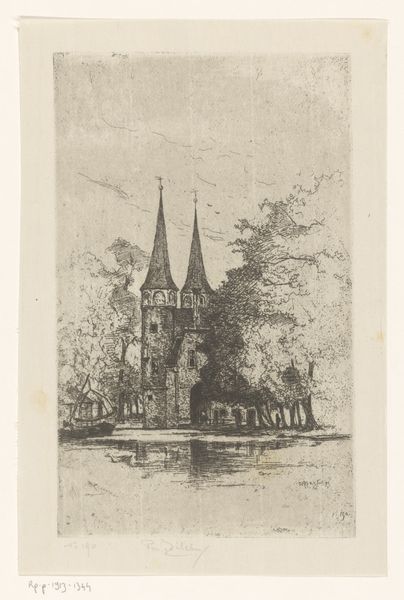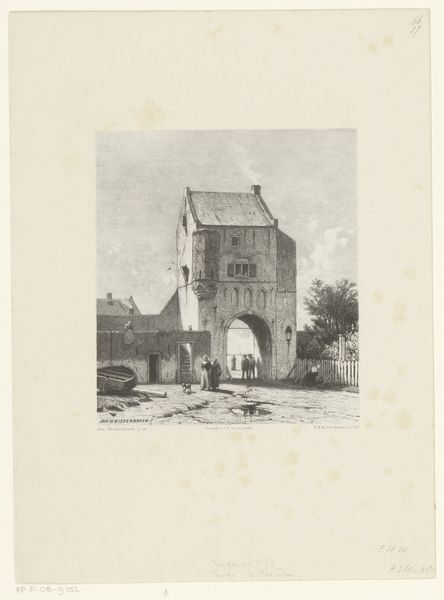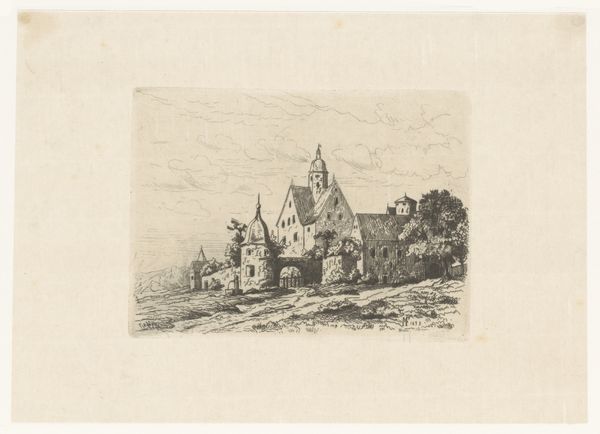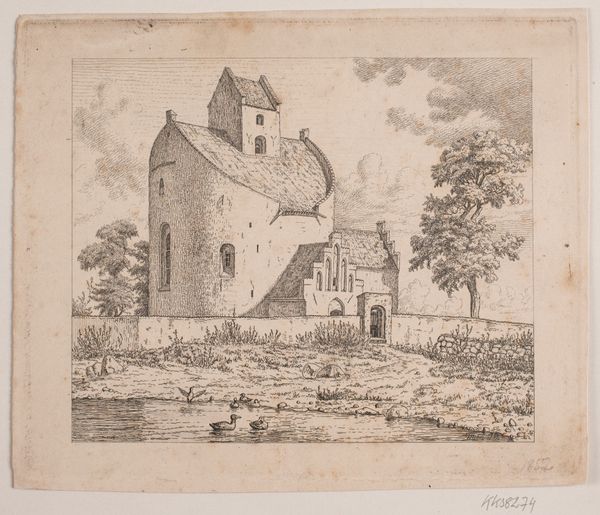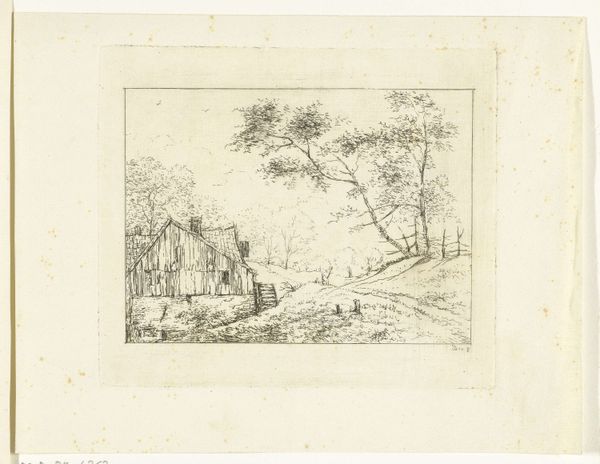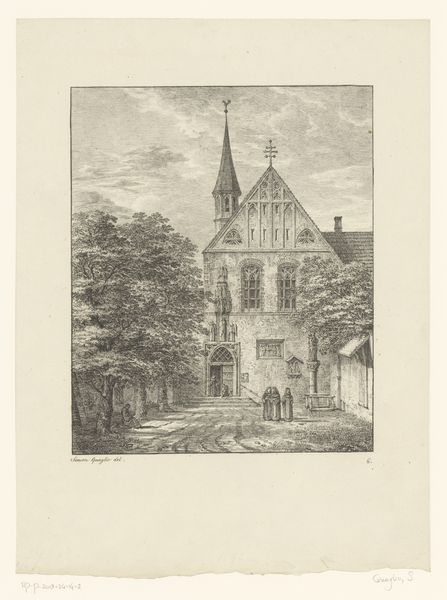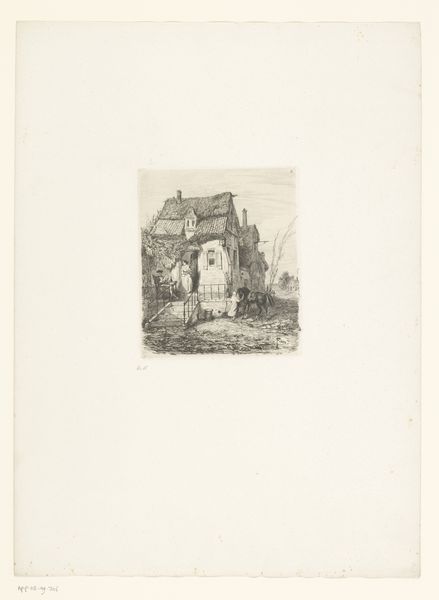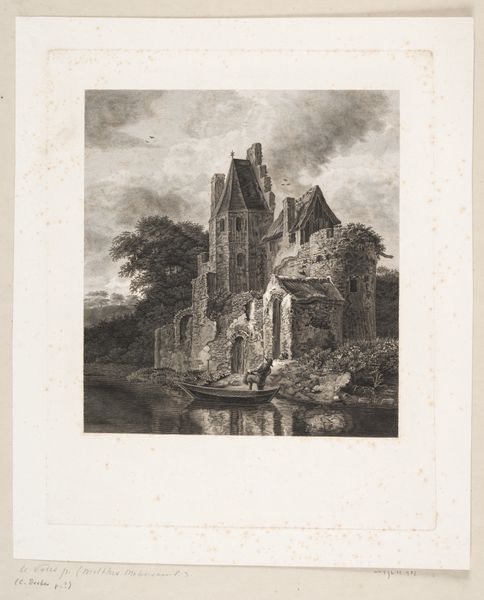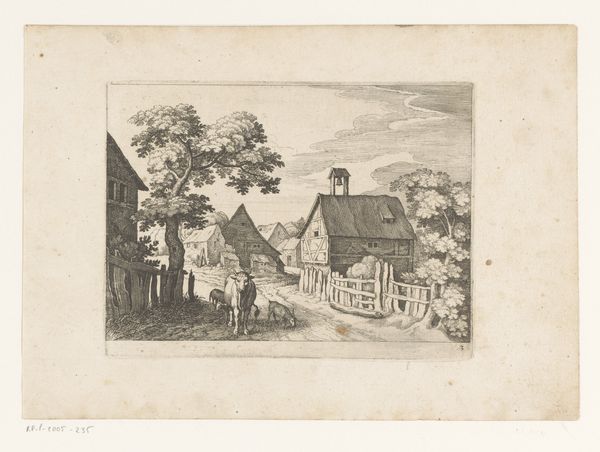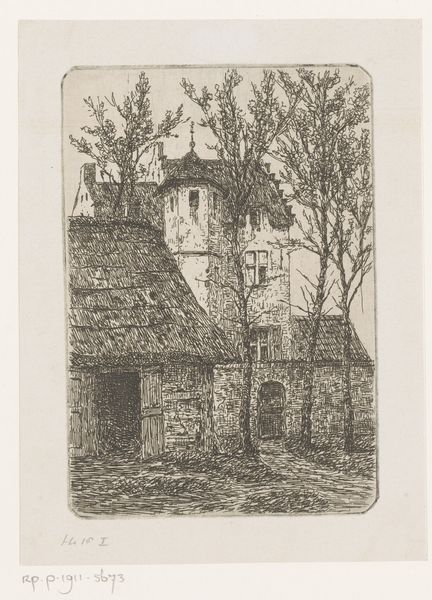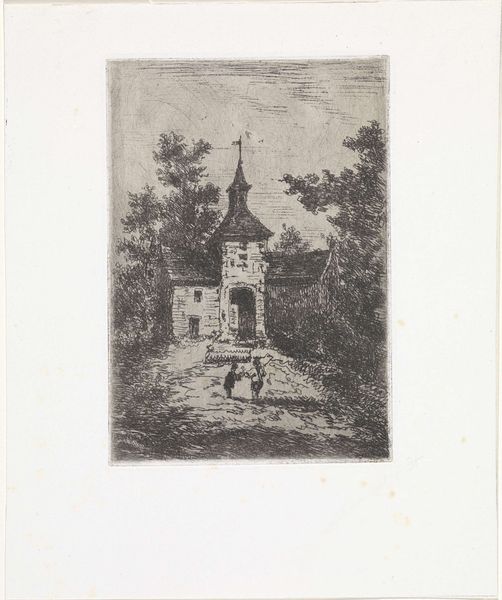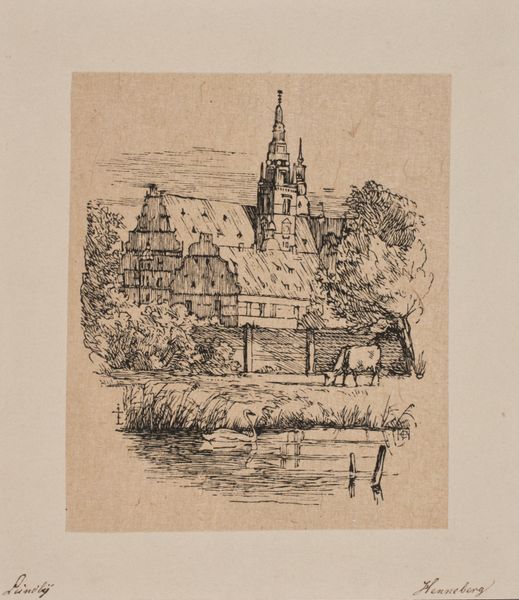
Dimensions: height 199 mm, width 150 mm
Copyright: Rijks Museum: Open Domain
J. Weyn made this print of a castle in 1758. Etchings like this one were often commissioned by wealthy landowners to celebrate their family seat. The print is not just a picture of a building; it’s a statement about power, lineage, and the enduring nature of the aristocracy. Castles in the 18th century were becoming obsolete as military structures, but they retained a potent symbolic value. This image creates meaning through its references to history, class, and property. The serene moat, the well-kept grounds, and the imposing architecture all speak to the owner's wealth and status. In the Dutch Republic, where civic virtue was publicly extolled, displays of aristocratic power had to be carefully managed. By studying estate records, family papers, and other archival sources, we can learn more about who commissioned this print and what they hoped to communicate through it. Understanding the social and institutional context of art helps us appreciate its complex meanings.
Comments
No comments
Be the first to comment and join the conversation on the ultimate creative platform.
